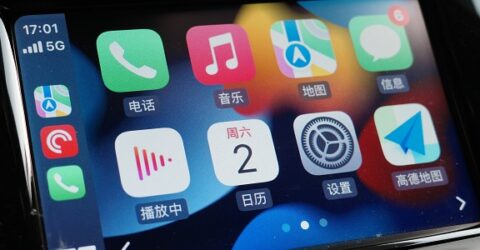A guide to Apple CarPlay and Android Auto
Apple CarPlay and Android Auto provide a bridge between home broadband and your car’s infotainment system

Smartphones have become our portals to the internet. In many households, they’re now the primary tool for gaming, banking, shopping and communicating.
Around the home, they harness domestic WiFi connectivity. In public, they use 4G or 5G cellular networks. But when we’re in our cars, they’re somewhat stifled.
Car manufacturers install proprietary infotainment systems, controlled through a variety of touchscreens, rotary dials, trackpads and buttons.
Just as WiFi has evolved into a universal standard recognised by any device, there has long been a need to develop a universal in-car assistant platform.
The solution involved using smartphone mirroring technology to establish a bridge between our devices and our vehicles, making home broadband services accessible on the move.
Automatic for the people
Apple CarPlay and Android Auto are Apple and Google’s respective takes on redirecting smartphone content to car infotainment screens.
Many vehicles now offer these services wirelessly, though some still require mobile devices to be physically connected along a USB lead.
Once a smartphone has been connected, the vehicle’s central infotainment screen will mirror key functionalities of that device.
However, it won’t replicate all of them.
Apple CarPlay and Android Auto have been designed to bring communication and media tools such as Siri and Spotify into our vehicles.
They also support voice-command messaging services, as well as enabling hands-free calls for people who either can’t or won’t use Bluetooth to achieve the latter objective.
Apple Maps displays relevant speed limit signs on the car’s infotainment screen, while Android Auto runs the all-conquering Google Maps and its turn-by-turn-navigation.
In a car without satnav, it’s transformative to view crisply rendered satellite imagery of your exact location – though it quickly becomes expensive in terms of data usage.
The car’s the star
Apple CarPlay is pre-installed onto iOS devices, while Google customers must install the Android Auto app. Compatible vehicles won’t need any modifications.
The car is ultimately in charge of what displays on its screen. Powerful though these mirroring tools are, they don’t support every app, and functionality may be limited.
Interfaces vary by manufacturer. You might control your phone through a button, a dial, a touchpad, voice commands or by tapping the infotainment screen.
The phone itself can’t be used while driving, with six penalty points and a £200 fine the standard punishment for transgressors.
Apple CarPlay and Android Auto should eliminate any need to physically handle smartphones and tablets on the road, and they’re constantly evolving to improve this process.
However, General Motors recently announced it would drop CarPlay from its vehicles from next year onwards, replacing it with a new Google interface – but not Android Auto.
In the age of data harvesting, car manufacturers want to capture and exploit customer data themselves, rather than meekly surrendering it to third parties.
As such, CarPlay and Auto may currently be at their peak of popularity. Use them while you can…






